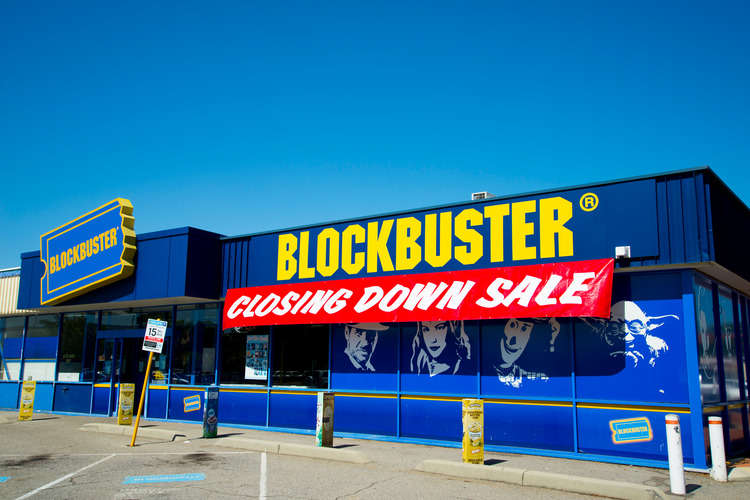
Failure is a topic most of us prefer to avoid. But ignoring obvious warning signs of business trouble is a sure way to end/cause a business to fail.
Research shows that “Business success comes from doing many things adequately and at least one thing extremely well. Failure, on the other hand, comes from doing any one of the myriads of things poorly.”
Running an organization/business is no easy task. Being aware of common downfalls in business can help you proactively avoid them. It’s a constant challenge. We know, but it’s also a continuous opportunity to avoid becoming one of the statistics.
I’ll highlight the factors that many entrepreneurs need to be successful. In entrepreneurship, there are so many ways for things to go wrong. But I’ll also highlight what makes entrepreneurs/businesses succeed:
- WHY
Why do you want to start the business?
Hobby? need money/for money? Be your own boss? side hustle? provide a solution to a problem? etc.
Many people talk about “the why”… from the best business experts of the 20th Century (W. Edwards Deming, Peter Drucker, Jack Welch) to the new wave of social media thought leaders (Simon Sinek, Jay Shetty, and Gary V., etc.) but no one tells you HOW to set-up, embrace and utilize the “why”, in practical terms…
Setting up and applying the “why” so that it works… requires the development and religious (if not fanatical) commitment to your MEVPIV (Mission, Ethos, Vision, Purpose, Identity, and Values) statements…
Richard Branson is credited with coining the phrase, “It’s all about your people.”
The absence of a formal, genuine MEVPIV is the core factor causing most businesses to fail because without a good MEVPIV, sooner or later argument, silos, power-mongering, office politics, decreasing morale, and eroded productivity will undo even the best of the best.
2. MARKET, COMPETITORS & CUSTOMERS
a. Failure to understand your market and customers. We often ask our clients, “Where will you play and how will you win?”. In short, it’s vital to understand your competitive market space and your customers’ buying habits. Answering questions about who your customers are and how much they’re willing to spend is a huge step in putting your best foot forward.

b. Do your homework. What is the market for business X in this area?
c. Who are the competitors?
d. Avoid Insufficient prior research into the market.
e. Lack of knowledge required in a certain field.
f. Competition can slow you or even maim you. But I’ve yet to see it kill a team with happy customers and true dedication to going long.
Try and beat your dirty competitors.
g. Too small a market. The best founders always find a way to grow their market over time. If you can get to even 10 happy customers, you can get to 20, and then 100. And then you are off to the races.
h. Being disrupted by a new player who cuts you from beneath you.
I. The folks that end up buying your product are often not the same as you imagined! Some founders just aren’t willing to build software and sell it to the customers that want them. They just don’t want to take it where it goes.
j. Not finding a 10x feature. Almost every category already has 5, 10, 100, or 1000 vendors in it. What’s your 10x feature? The one customers will pay for? Do you know? More here
k. Your company has no barrier to stopping copycats.
l. Your business requires too much/ too little to start.
m. Overdependence on a single customer. If your biggest customer walked out the door and never returned, would your organization be, ok? If that answer is no, you might consider diversifying your customer base as a strategic objective in your strategic plan.
n. No customer strategy. Be aware of how customers influence your business. Are you in touch with them? Do you know what they like or dislike about you? Understanding your customer’s forwards and backward can play a big role in the development of your strategy.
3. PROFITABILITY
a. Opening a business in an industry that isn’t profitable. Sometimes, even the best ideas can’t be turned into a high-profit business. It’s important to choose an industry where you can achieve sustained growth. We all learned the dot-com lesson – to survive, you must have positive cash flow. It takes more than a good idea and passion to stay in business.
b. how long must the business run before any likely profit appears?
It takes about three years for a shop to become profitable enough to run on its income. It’s bloody hard work to get a small business like that up and running. Hard work means 6.5 days a week. You need to open six days a week. Evenings you do the bookkeeping and stock orders.
c. Not committing to 24 months to get to the first $1m+ in revenue — whatever it takes. It can easily take that long in SaaS.
d. No one wants to buy what you offer.
e. You cannot control quality and price.
f. wrong price of a product.
g. Some failed because they took a salary for themselves, which made it even more difficult for the shop to become a profitable business. Sometimes they even hired staff on the basis that the shop would quickly become profitable.

4. COMMUNICATION
a. Failure to understand and communicate what you are selling. You must clearly define your value proposition. What is the value I am providing to my customer? Once you understand it, ask yourself if you are communicating it effectively. Does your market connect with what you are saying?
b. You don’t know how to sell.
c. Poor communication between staff, co-founders, customers, etc.
d. Cofounder Drama / Conflict. Starting up is hard. Cofounders being at each other’s throats when it’s harder and takes longer than expected kills a lot of startups. A lot of them.
e. Lack of communication skills
f. Lack of customer service.
g. Watch how you treat and communicate with the customers.

5. FUNDING/CAPITAL

a. Inadequate financing. Businesses need cash flow to float them through the sales cycles and the natural ebb and flow of business. Running the bank accounts dry is responsible for a good portion of business failure. Cash is king, and many quickly find that borrowing money from lenders can be difficult.
Some often don’t have the funds to restock the shelves, so as the weeks went by the shop looked ever more forlorn.
You need a fair bit of capital to carry you through these early days. If it’s borrowed, you need to keep up the payments on the loan. You need to be able to pay the rent and the utilities, and any bank charges and taxes owed, or you’ll be out of business so fast your head will swim.
Running out of money. Sounds obvious, but startups do this all the time when they don’t have to. They just assume VCs will be there or bail them out. Assume instead, no one even writes you another check.
Underfunded. This can be stressful when the other competitors raise tons of capital. And it may again slow you down. But I haven’t seen being less funded kill a SaaS startup. Just slow it down maybe, for a while.
You don’t have enough capital to expand.
You do not have money to buy time, and cannot recover from mistakes.
b. Your sources of capital for business. How did you get the money? Mortgage a house? Use savings? Take out a business loan?
Sometimes many people use their savings or money from remortgaging their home to set up their business.
failure to capitalize sufficiently, and thinking in the short term only will lead to failure.
6. COMFORTABLE
a. Reactive attitudes. Failure to anticipate or react to competition, technology, or marketplace changes can lead a business into a danger zone. Staying innovative and aware will keep your business competitive.
b. Status-quo bias. Staying in a rut that made you successful when the technology is changing. The average life span of today’s multinational, Fortune 500-size corporation is 40 to 50 years.
c. Not keeping up with changing trends. For a “non-multinational the life span is much shorter. A sobering statistic tells us that almost 50% of the Fortune 500 from 1999 had disappeared from the list just ten years later.
d. Failed Assumptions. The whole entrepreneurial process is built upon assumptions. The entrepreneur converts each assumption into reality. Some fail, and those assumptions have to be redone based on the lessons learned. So, success can be built upon a foundation of failures. However, the attempt should be to avoid one big fatal crash.
e. Too slow to change, evolve, and adapt. Markets change. Teams that can’t evolve every few years with the market often eventually end up not quite failing but having mediocre outcomes at best.

7. PRODUCT/SERVICE; quality
a. Not knowing when to say “No.” To serve your customers well, you have to focus on quality, delivery, follow-through, and follow-up. Going after all the business you can get drains your cash and actually reduces overall profitability. Sometimes it’s okay to say no to projects or business so you can focus on quality, not quantity.
b. Lacking the products/services customers want/ Product is not for the market yet (no need)
c. Not being different; just doing what everyone else is doing.

8. TEAM
Not recruiting a strong enough team. In the end, a great team with 24 *months of runway almost always can do amazing things. They never seem to fail. They often come close. But great teams pull it out.

8. MANAGEMENT: manager/CEO/YOU
a. Poor management. Management of a business encompasses a number of activities: planning, organizing, controlling, directing, and communicating. The cardinal rule of small business management is to know exactly where you stand at all times. A common problem faced by successful companies is growing beyond management resources or skills.
b. paying too much to the CEO; new owners who take out a salary are already on the way to nowhere. The seed money to start up has to include at least three years of personal living expense sustenance. Successful businesses are run by folks who were successful at working for others and doing so with a positive point of view. Incompetence and poor leverage at the outset are the major killers.
c. You don’t know how to manage your company and people.
d. Focusing on irrelevant things: supplement many facilities that are not useful and focus on fancy showing off instead of building/ nurturing the target audiences or customers.
e. Businesses are started by incompetent, unknowledgeable “owners” because all the money in the business is borrowed and these folks have no real skin in the game. How they get the loans in the first place is a matter for another day. Because you think you can operate an enterprise working for “yourself” because that’s your dream, you are better off becoming a professional dreamer. In certain industries, the failure rate of former employees who think they can run the show better than their former employers is in the 80% range within the first year.
f. You don’t have a large heart and don’t have the fire of ruthlessness.

9. PLANNING
a. No planning. As the saying goes, failing to plan is planning to fail. If you don’t know where you are going, you will never get there. Having a comprehensive and actionable strategy allows you to create engagement, alignment, and ownership within your organization. It’s a clear roadmap that shows where you’ve been, where you are, and where you’re going next.
b. As with most things in life … if you want to build something to last, you need solid foundations.
Of course, many people proclaim, “Failing to plan is planning to fail”, but there is a deeper wisdom that goes beyond drafting plans.
Drafting enduring strategic guidelines for the people within an organization is the key… not JUST a Mission and Vision that the owners/bosses truly believe in, but a whole array of guidelines.

10. LOCATION
a. some people choose a shop based more on where rents are low than on where they might find a good customer base and have good footfall.
b. some generally budgeted for three months’ rent and about three months’ stock purchasing, after which they assumed the shop would begin to pay its own way.
c. clean business environment is also important, like places where food is sold.
d. Lack of a location/failing to get a good location hence failing as a business.

11. Versatility:
Entrepreneurs must be able to roll with the punches especially early on. Many things will happen that cannot be planned for. Early pivots are necessary. Entrepreneurs also must be able to run and understand each part of the business early on. That will allow them to run a leaner setup and understanding each part makes the entrepreneur more capable to hire the right people for those positions. However, a small number of entrepreneurs are versatile enough to handle the unexpected.
12. High Emotional IQ:
Successful entrepreneurs need to exercise a high emotional IQ when dealing with customers, employees, and partners. Employees will follow the leader’s emotional IQ path that they set. To have a high emotional IQ means making rational decisions, having empathy for those you work with, and sympathizing when necessary to benefit the business in the long term. For some entrepreneurs who just started on their own without a team, they didn’t need to really develop emotional intelligence till they had to start growing a team and manage key partnerships. Many entrepreneurs fail to take the step from solopreneurship to creating a company that requires a high emotional IQ.
13. Grounded:
Too many entrepreneurs get big-headed as soon as they have achieved any semblance of traction. As soon as somebody assumes they have more to preach than learn, they stop learning and lose crucial awareness. Many entrepreneurs have crashed and burned because they weren’t grounded. Most founders tend to not be grounded especially if they have tasted success. I have seen so much success go to entrepreneurs’ heads.
14. Outright fraud or theft
This is just obvious when the employer or the employee steals from the company, it affects everyone there. And eventually, it will collapse.
There MUST be tough rules and mechanisms used to prevent these from happening.
15. RISKS
Raring to go with inadequate risk mitigation. Once an entrepreneur gets hold of an idea, they are raring to go. It is hard for them to focus on the numerous risk factors that are still beneath that idea. This collection of risks makes for one giant entrepreneurial risk. The idea consumes all their thoughts. They have full confidence, based upon bravado, that they can pull it off. They end up paying the most attention to things that they are very good at and, therefore, already have a lower level of risk. They have to deal with these same issues when the meter is ticking, and the problems are coming at them at rocket speed.
Unexpected Risks. No wonder the failure rate is so high in the very beginning.

Just Do it. Unfortunately, this also means they have ignored many things they are either unaware of or not good at. So, they ignore them. Therefore, by definition, the most killer risks in any startup business will be the ones that have been ignored and not even considered. These risks come early and are devastating for a nascent entity to survive.
16. GOVERNMENT
A government MUST be pro-business; to create a business-enabling environment. These include: reducing barriers to entry of businesses, appropriate rules, and regulations, providing security, knowledge, and skills, even grants, and incentives, providing basic needs like electricity, water, good roads, good tax laws, reducing corruption, etc. that drive in investors not driving them away or giving them a hard time making them regret investing in the country.

17. Quitting. No one can force you to quit.

Tags: business businesses clients educate factors fail finance learning market reasons startups team Tips why?


